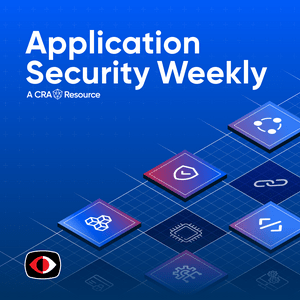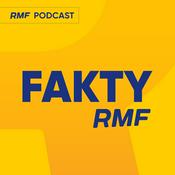Application Security Weekly (Audio)

376 odcinków

Modern AppSec: OWASP SAMM, AI Secure Coding, Threat Modeling & Champions - Sebastian Deleersnyder, Dustin Lehr, James Manico, Adam Shostack - ASW #362
23.12.2025 | 1 godz. 7 min.
Using OWASP SAMM to assess and improve compliance with the Cyber Resilience Act (CRA) is an excellent strategy, as SAMM provides a framework for secure development practices such as secure by design principles and handling vulns. Segment Resources: https://owaspsamm.org/ https://cybersecuritycoalition.be/resource/a-strategic-approach-to-product-security-with-owasp-samm/ As genAI becomes a more popular tool in software engineering, the definition of "secure coding" is changing. This session explores how artificial intelligence is reshaping the way developers learn, apply, and scale secure coding practices — and how new risks emerge when machines start generating the code themselves. We'll dive into the dual challenge of securing both human-written and AI-assisted code, discuss how enterprises can validate AI outputs against existing security standards, and highlight practical steps teams can take to build resilience into the entire development pipeline. Join us as we look ahead to the convergence of secure software engineering and AI security — where trust, transparency, and tooling will define the future of code safety. Segment Resources: https://manicode.com/ai/ Understand the history of threat modeling with Adam Shostack. Learn how threat modeling has evolved with the Four Question Framework and can work in your organizations in the wake of the AI revolution. Whether you're launching a formal Security Champions program or still figuring out where to start, there's one truth every security leader needs to hear: You already have allies in your org -- they're just waiting to be activated. In this session, we'll explore how identifying and empowering your internal advocates is the fastest, most sustainable way to drive security culture change. These are your early adopters: the developers, engineers, and team leads who already "get it," even if their title doesn't say "security." We'll unpack: Why you need help from people outside the security org to actually be effective Where to find your natural allies (hint: it starts with listening, not preaching) How to support and energize those allies so they influence the majority What behavioral science tells us about spreading change across an organization Segment Resources: Security Champion Success Guide: https://securitychampionsuccessguide.org/ Related interviews/podcasts: https://www.youtube.com/playlist?list=PLPb14P8f4T1ITv3p3Y3XtKsyEAA8W526h How to measure success and impact of culture change and champions: https://www.linkedin.com/pulse/from-soft-skills-hard-data-measuring-success-security-yhmse/ Global Community of Champions sign up: https://docs.google.com/forms/d/e/1FAIpQLScyXPAMf9M8idpDMwO4p2h5Ng8I0ffofZuY70BbmgCZNPUS5Q/viewform This interview is sponsored by the OWASP GenAI Security Project. Visit https://securityweekly.com/owaspappsec to watch all of CyberRisk TV's interviews from the OWASP 2025 Global AppSec Conference! Visit https://www.securityweekly.com/asw for all the latest episodes! Show Notes: https://securityweekly.com/asw-362

Developing Open Source Skills for Maintaining Projects - Kat Cosgrove - ASW #361
16.12.2025 | 1 godz. 3 min.
Open source projects benefit from support that takes many shapes. Kat Cosgrove shares her experience across the Kubernetes project and the different ways people can make meaningful contributions to it. One of the underlying themes is that code is written for other people. That means PRs need to be understandable, discussions need to be enlightening, documentation needs to be clear, and collaboration needs to cross all sorts of boundaries. Visit https://www.securityweekly.com/asw for all the latest episodes! Show Notes: https://securityweekly.com/asw-361

Making OAuth Scale Securely for MCPs - Aaron Parecki - ASW #360
09.12.2025 | 1 godz. 7 min.
The MCP standard gave rise to dreams of interconnected agents and nightmares of what those interconnected agents would do with unfettered access to APIs, data, and local systems. Aaron Parecki explains how OAuth's new Client ID Metadata Documents spec provides more security for MCPs and the reasons why the behavior and design of MCPs required a new spec like this. Segment resources: https://aaronparecki.com/2025/11/25/1/mcp-authorization-spec-update https://www.ietf.org/archive/id/draft-ietf-oauth-client-id-metadata-document-00.html https://oauth.net/cross-app-access/ https://oauth.net/2/oauth-best-practice/ Visit https://www.securityweekly.com/asw for all the latest episodes! Show Notes: https://securityweekly.com/asw-360

Making TN Critical Infrastructure the Most Secure in the Nation - T. Gwyddon 'Data' ("Gwee-thin") Owen, James Cotter - ASW #359
02.12.2025 | 59 min.
For OT systems, uptime is paramount. That's a hard rule that makes maintaining, upgrading, and securing them a complex struggle. Tomas "Data" Owens and James Cotter discuss how Tennessee is tackling the organizational and technical challenges that come with hardening OT systems across the state. Those challenges range from old technology (like RS-232 over Wi-Fi!?) to limited budgets. They talk about the different domains where OT appears and provide some examples of how the next generation of builders and breakers can start learning about this space. Segment Resources: Free Cyber OT Training (INL): https://ics-training.inl.gov/ Free Cyber Hygiene Training (CISA): https://www.cisa.gov/cyber-hygiene-services Recommendations for network hardening (CISA): https://www.cisa.gov/shields-up More OT and ICS resources: https://github.com/biero-el-corridor/OTICSressource_list Visit https://www.securityweekly.com/asw for all the latest episodes! Show Notes: https://securityweekly.com/asw-359

Figuring Out Where to Start with Secure Code - ASW #358
25.11.2025 | 46 min.
What are your favorite resources for secure code? Co-hosts John Kinsella and Kalyani Pawar talk about the reality of bringing security into a business. We talk about the role of the OWASP Top 10 and the OWASP ASVS in crafting security programs. And balance that with a discussion in what's the best use of everyone's time -- developers and appsec folks alike -- in crafting code that's secure by design rather than just secure from scanner results. Visit https://www.securityweekly.com/asw for all the latest episodes! Show Notes: https://securityweekly.com/asw-358
Więcej Wiadomości podcastów
Trendy w podcaście Wiadomości
O Application Security Weekly (Audio)
Słuchaj Application Security Weekly (Audio), Raport o stanie świata Dariusza Rosiaka i wielu innych podcastów z całego świata dzięki aplikacji radio.pl

Uzyskaj bezpłatną aplikację radio.pl
- Stacje i podcasty do zakładek
- Strumieniuj przez Wi-Fi lub Bluetooth
- Obsługuje Carplay & Android Auto
- Jeszcze więcej funkcjonalności
Uzyskaj bezpłatną aplikację radio.pl
- Stacje i podcasty do zakładek
- Strumieniuj przez Wi-Fi lub Bluetooth
- Obsługuje Carplay & Android Auto
- Jeszcze więcej funkcjonalności


Application Security Weekly (Audio)
pobierz aplikację,
zacznij słuchać.







































